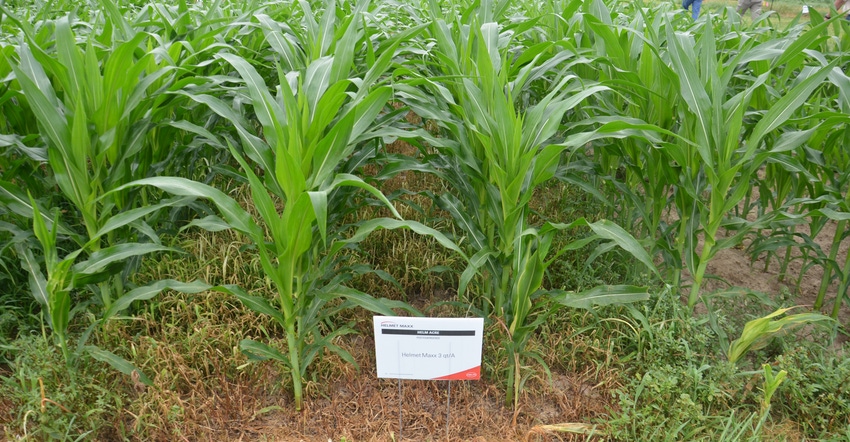
Rumors of herbicide shortages and actual tight supplies of certain herbicides plagued retailers and caused some growers to change plans for weed control this season. Company spokespersons and industry experts expect more of the same in the next 12 months. The result likely will be higher prices for some products and shortages of certain materials.
Dave Schumacher and others at Helm Agro made that clear while leading a tour of their research plots near Sheridan, Ind., recently. They noted that the cost of a shipping container to get product here from overseas typically is about $3,000. At the time of the field day, each container cost $16,000, with that amount expected to go as high as $20,000 per container.
That means shipping costs alone will add up to several dollars per gallon to certain herbicides sold in the U.S. They also pointed to a significant increase in the price of metribuzin, the active ingredient in multiple herbicides.
Helm spokespersons shared another concern. The last time China hosted the Olympics, in 2008, it shut down factories well in advance to present a cleaner picture to visitors and the world. The country is scheduled to hold the 2022 Winter Olympics in February. If history repeats itself and factories are forced to shut down, that could tighten herbicide supplies even more. As a result, Helm spokespersons urge customers to lock in their herbicide prices and actual supplies for 2022 soon.
Other experts weigh in
Bill Johnson, Purdue University Extension weed specialist, agrees that disruptions in the supply chain linked back to the COVID-19 pandemic showed up this year. He also expects it to be several months before some of these issues work themselves out.
“Some of it was unusual things that you wouldn’t think about happening,” he says. For example, he knows of a case where a company had the active ingredient to make the herbicide but ran into a shortage of the inert ingredients to mix with it due to COVID-19 supply chain disruptions.
Another source reports a case where production was held up because the company that supplies lids for containers couldn’t keep up with demand.
“We probably heard about more problems with getting glufosinate, the active ingredient in Liberty, when you wanted it than with shortages of glyphosate,” Johnson says. “Part of the message here to growers is to do the application right the first time. If you are having trouble getting product, you don’t want to go back in and make another application to clean up escapes.”
Supply chain problems affected some manufacturers more than others, Johnson notes. For example, FMC appeared to have ample supplies of Authority products this year.
“The bottom line is that we expect this inconsistency and these issues to continue in the short term,” Johnson says. “If you can get the herbicide you want now and are set up to store it, you might want to get it in your hands now.”
About the Author(s)
You May Also Like




